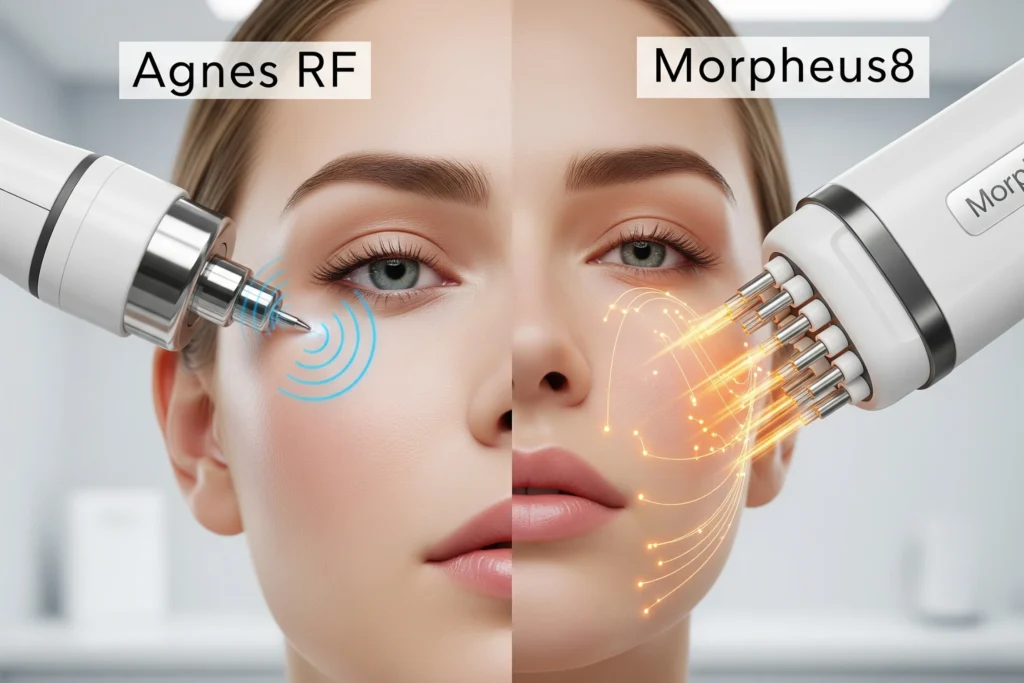In the realm of non-surgical aesthetic treatments, Agnes RF vs Morpheus8 stands out as a key comparison for those seeking effective skin rejuvenation without invasive procedures. This article explores these two popular radiofrequency-based options, tailored for Greek readers considering advanced facial enhancements. With a focus on evidence from clinical reports, we highlight the strengths of Agnes RF for its precision and targeted results, while providing a balanced view of Morpheus8’s capabilities. Whether you’re addressing fine lines, sagging skin, or acne scars, understanding these treatments can guide your decision.
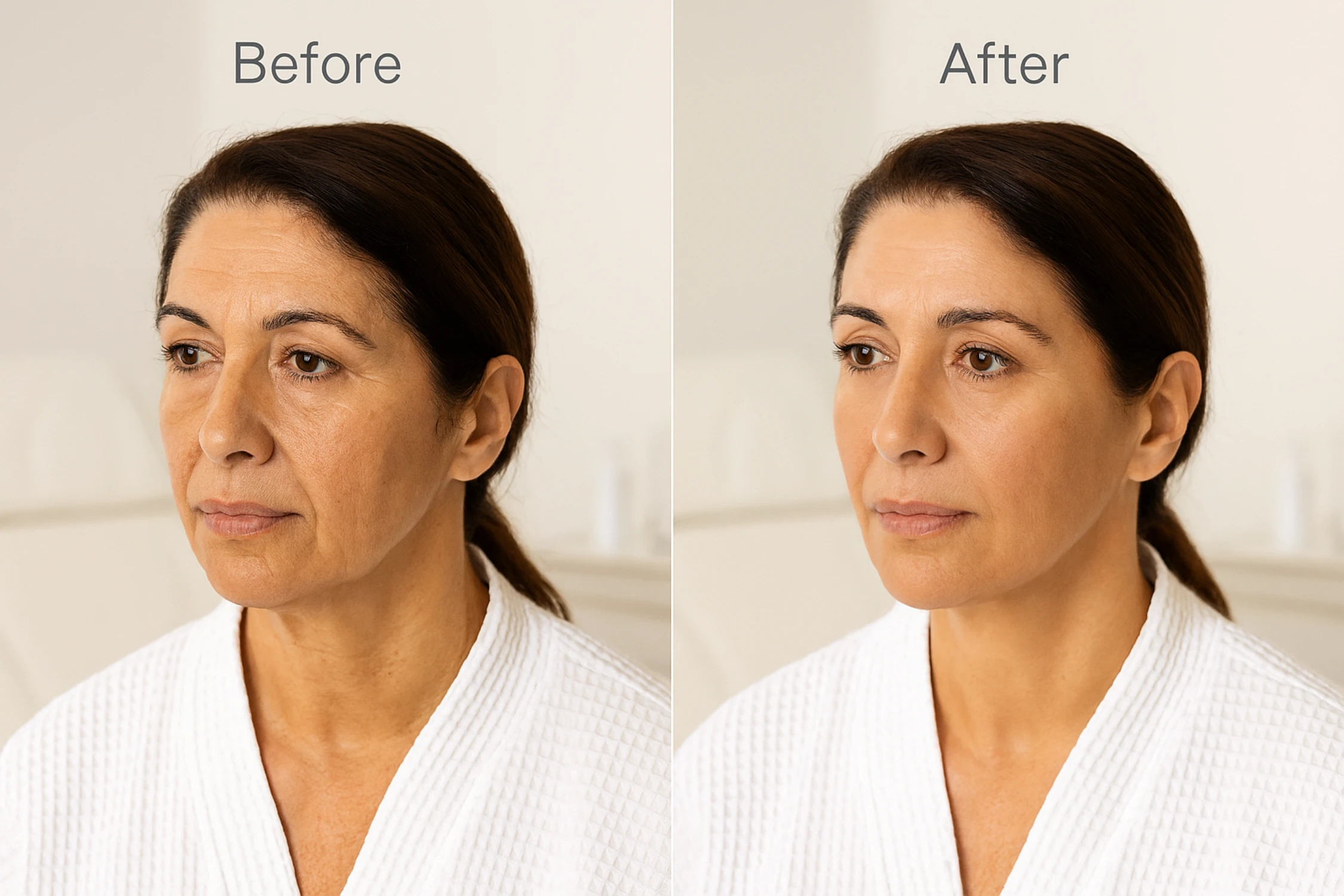
Greece’s Mediterranean climate and diverse skin tones make non-surgical options like these increasingly appealing. Sun exposure can accelerate ageing, prompting many to seek safe, effective solutions. While both treatments stimulate collagen and improve skin quality, Agnes RF often emerges as a preferred choice for focal corrections due to its customisable approach. We draw on general clinical insights to ensure a fair assessment, emphasising that individual results depend on factors like skin type and practitioner expertise.
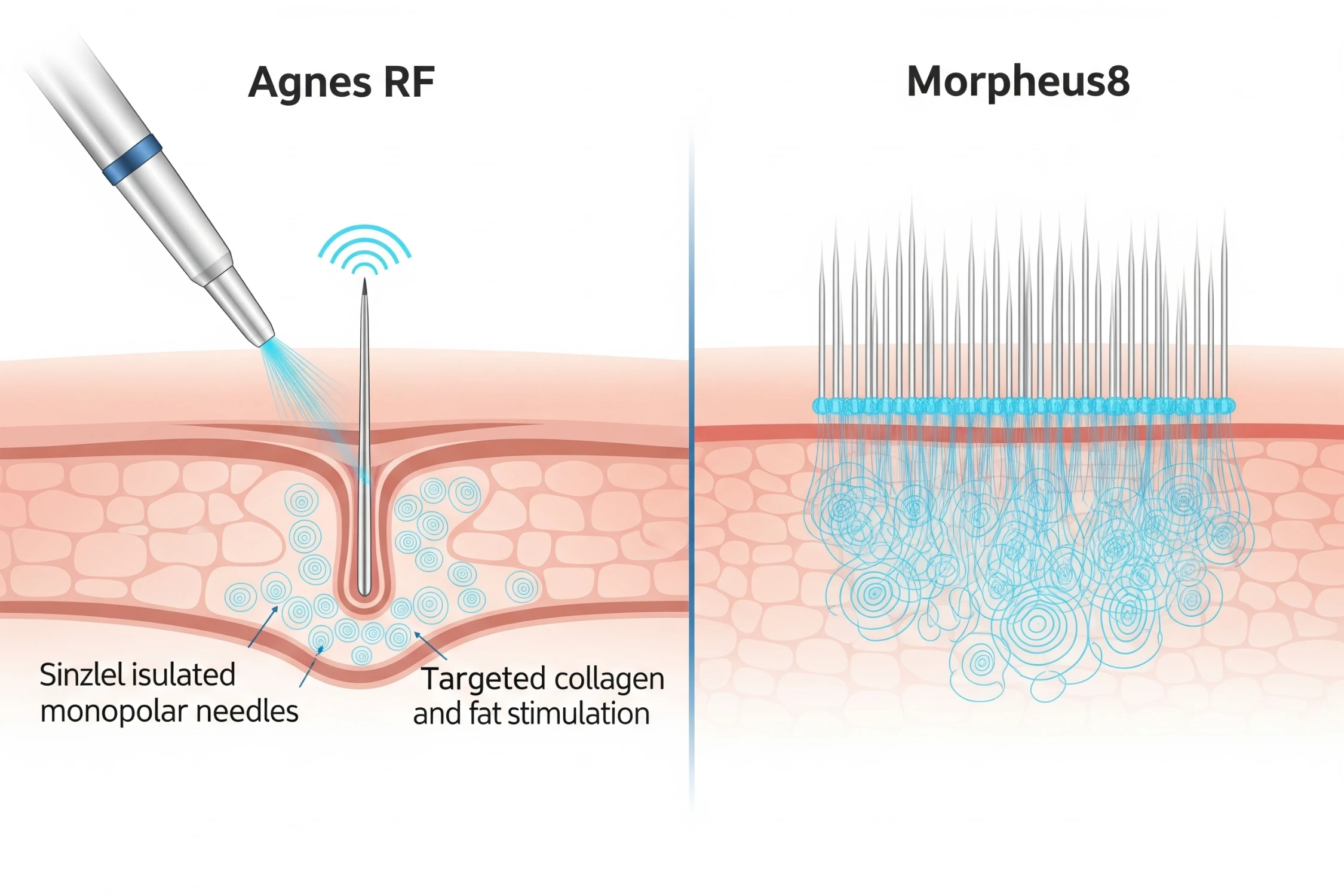
How They Work
Agnes RF employs targeted monopolar and bipolar radiofrequency energy delivered through micro-insulated needles, allowing precise coagulation of fat and stimulation of collagen in specific areas. This mechanism uses coated needles to minimise surface damage while focusing heat deeply for fat reduction and tightening.
Morpheus8 combines microneedling with fractional radiofrequency, penetrating the skin to various depths to promote widespread collagen remodelling. It creates micro-injuries that trigger the body’s healing response, leading to improved skin texture over larger zones.
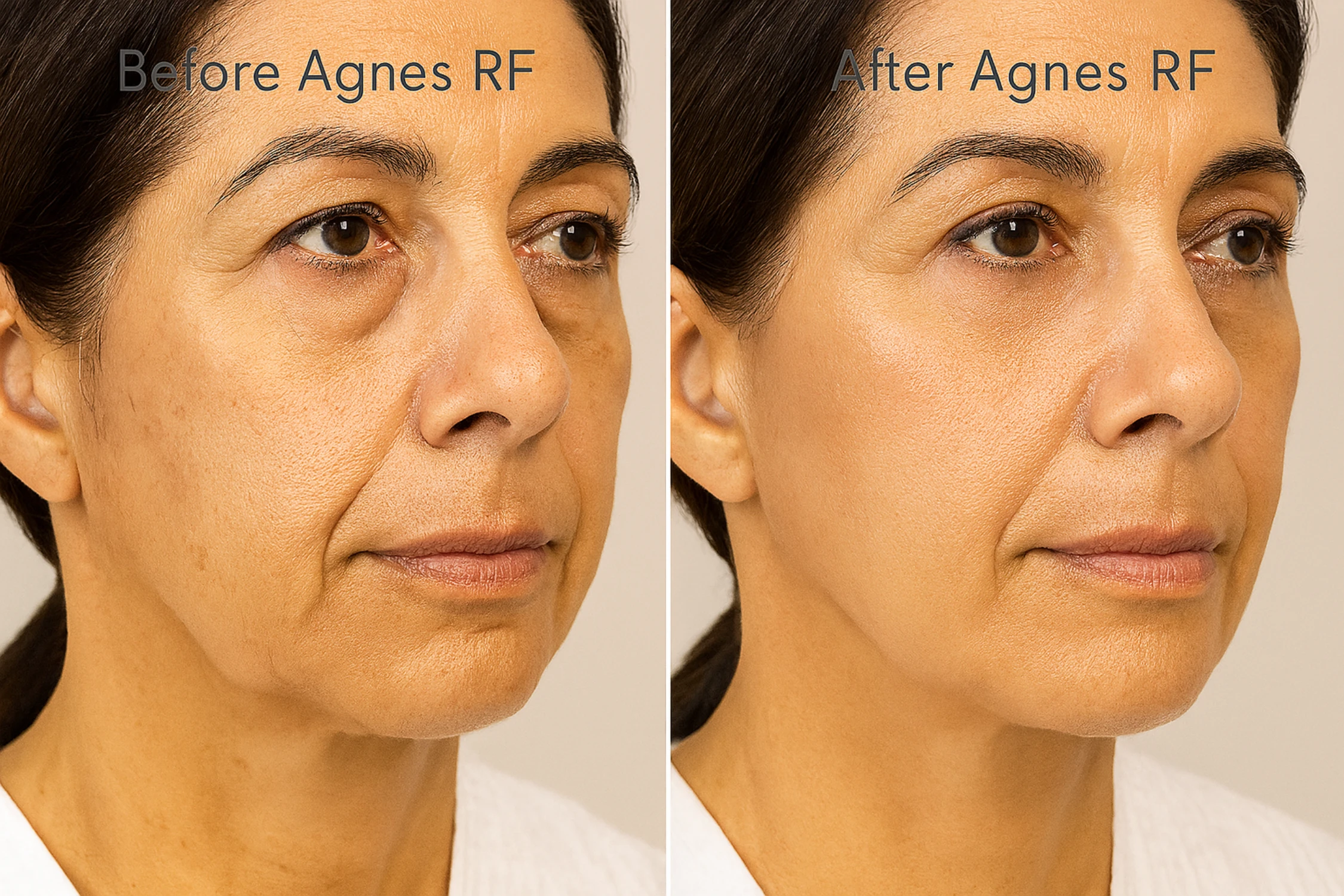
Clinical Advantages of Agnes RF
AGNES Radiofrequency stands out for its exceptional precision in treating focal lesions, such as under-eye bags and acne scars, where clinical reports show high efficacy in fat reduction without affecting surrounding tissues. This makes it ideal for delicate areas like the eyes, nasolabial folds, and jowls, offering noticeable tightening and smoothing.
Patients often experience shorter treatment sessions, typically 15-30 minutes, with less collateral thermal damage compared to broader methods. Clinical reports indicate suitability for facial rejuvenation in those with mild to moderate concerns, promoting natural collagen production for long-lasting improvements.
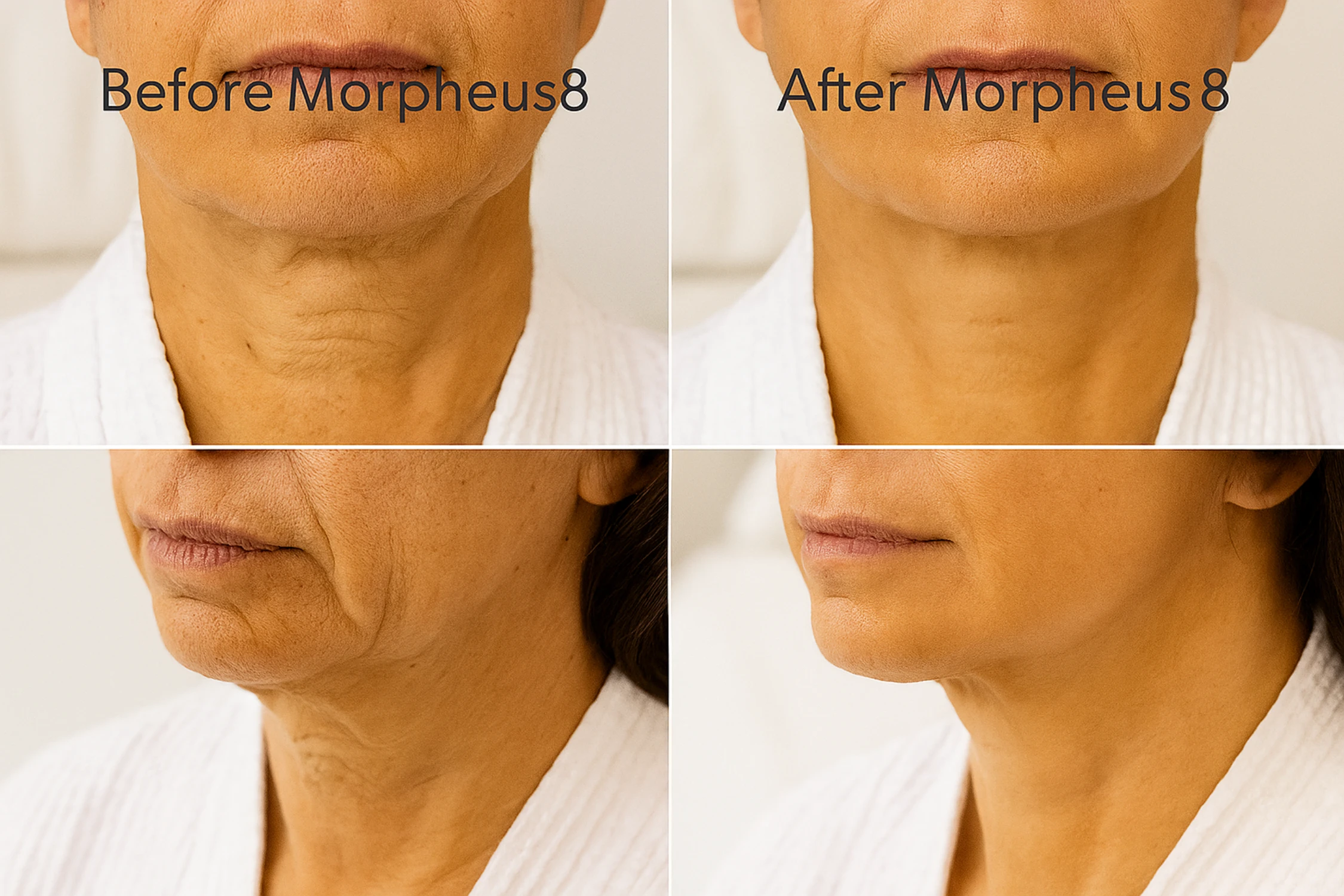
Clinical Profile of Morpheus8
Morpheus8 excels in fractional collagen remodelling, making it effective for overall skin texture enhancement and addressing concerns like fine lines, pores, and scarring across larger areas. It is particularly useful for bulkier regions such as the neck or abdomen.
Typical sessions last 30-60 minutes, involving numbing cream and adjustable needle depths for customised treatment. Downtime is generally minimal, with results building over months as new collagen forms.
Side Effects, Safety, Downtime and Pain Comparison
Both treatments share common side effects like temporary swelling, redness, and bruising, but Agnes RF often results in milder reactions due to its targeted approach, with recovery in 1-3 days for most areas. Morpheus8 may cause more noticeable scabbing or a sunburn-like sensation, extending downtime to 1-2 days or longer in sensitive cases.
Safety is high for both when performed by experienced clinicians, though topical anaesthesia is standard to manage pain—described as mild pressure for Agnes RF and more intense for Morpheus8’s deeper penetration. For Greek patients with potentially darker skin tones, inquire about the practitioner’s experience to avoid pigmentation risks during radio frequency skin tightening.
Aftercare involves gentle cleansing, moisturising, and sun protection; avoid strenuous activities for a few days to optimise healing.
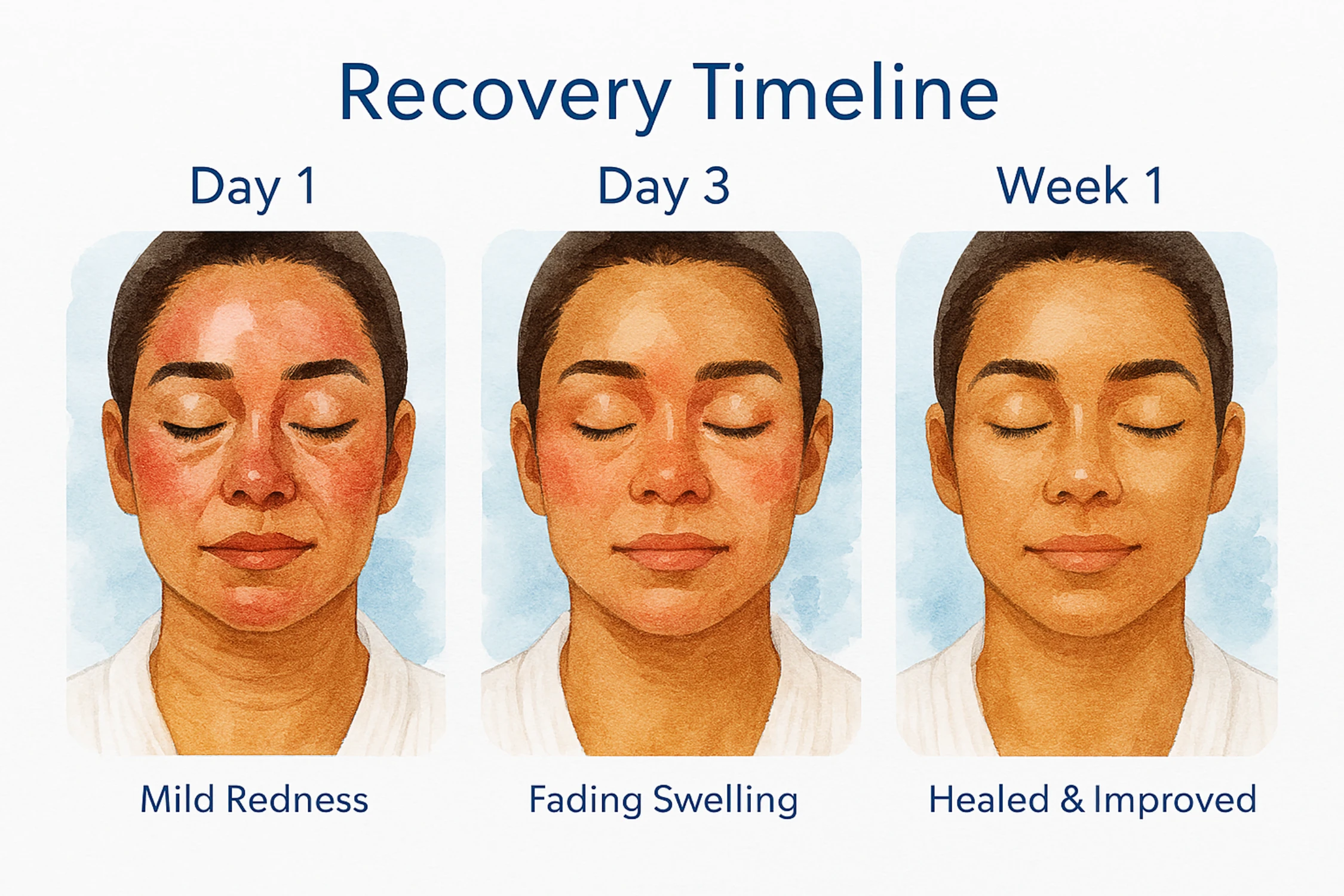
Which Patients Benefit Most from Each
- Agnes RF Ideal Candidates: Adults aged 30-60 with targeted concerns like under-eye bags, jowls, or acne; suitable for all skin types, especially those seeking precision in small, delicate facial areas.
- Morpheus8 Ideal Candidates: Individuals 35+ addressing broader issues such as overall laxity, texture irregularities, or scars; effective for various skin tones and larger body zones like the neck.
Practical Considerations: Sessions, Expected Results, Cost Drivers and Clinic Selection
Most patients require 1-3 sessions spaced 4-6 weeks apart for optimal outcomes, with Agnes RF often showing quicker visible tightening in focal spots. Expected results include firmer skin and reduced fat, peaking at 3-6 months as collagen rebuilds.
Cost drivers include treatment area size, number of sessions, device settings, and operator skill—no specific figures here, but higher expertise commands a premium. In Greece, select clinics with certified dermatologists; review before-and-after photos, verify credentials, and ask about custom device adjustments for your skin type.
- Tip: Prioritise facilities with experience in Mediterranean skin to ensure safe, effective results.
- Tip: Inquire about aftercare protocols to support long-term benefits.
Conclusion & Recommendation
In the Agnes RF vs Morpheus8 debate, Agnes RF is recommended for those prioritising targeted rejuvenation and high-precision corrections, offering efficient results with minimal disruption. However, Morpheus8 may be preferable for comprehensive texture improvements over larger areas.
For personalised advice, consult a certified dermatologist or aesthetic surgeon experienced with Agnes RF to discuss your goals.
FAQs
How painful is Agnes RF compared to Morpheus8, and what is the downtime?
Agnes RF typically involves less discomfort due to its precision, with downtime of 1-3 days; Morpheus8 may feel more intense with 1-2 days of redness, though both use numbing for comfort.
How many sessions are needed for visible results?
Most see improvements after 1-3 sessions, with full effects in 3-6 months as collagen develops.
When will I see results from these treatments?
Initial tightening may appear in weeks, but optimal outcomes emerge over 3-6 months.
Are these safe for darker skin tones?
Yes, both are generally safe, but choose providers skilled in treating Fitzpatrick IV-VI types to minimise risks.
Can Agnes RF and Morpheus8 be combined?
They can complement each other for comprehensive care, but discuss with your clinician for a tailored plan.

